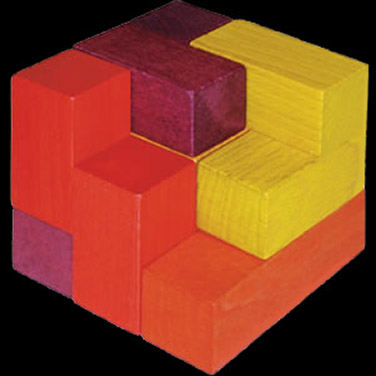Soma Cube

In this interesting game of patience, all figures that can be constructed from one, two, three or four identical cubes are considered, whereby a cube must share a common face with at least one other cube. If the cuboids and all the figures that can be converted into each other via rotation are excluded, precisely seven pieces remain, constructed from a total of twenty-seven cubes. The aim of the game is to assemble these seven pieces into a 3x3x3 cube.
History
The Soma cube was invented by Danish scientist and author Piet Hein. When he heard about dividing spaces into cubes during a lecture on quantum mechanics by Werner Heisenberg in 1936, he came up with the idea of breaking down a cube into smaller cubes. The problem became famous through Martin Gardner's description in "Scientific American" (September 1958). The task was generalised and applied to the construction of other figures. This begs the question as to how the impossibility of certain constructions can be proven.
Mathematics
The fact that there is a solution to the problem at all is surprising. A complete list of all 240 different solutions was compiled by John H. Conway and Michael J.T. Guy in 1961. They analysed the positions which the individual pieces can occupy within a 3x3x3 cube. If rotations and reflections are allowed, there are 11 520 solutions.